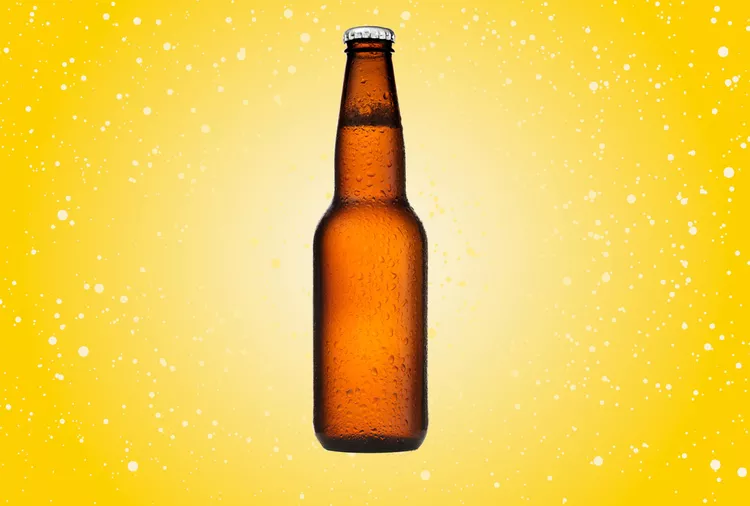Understanding Beer Shelf Life
Unlike perishable food items that can become unsafe to consume, beer primarily suffers from quality degradation over time rather than becoming harmful. An expert in brewery sciences explains that the shelf life of beer varies significantly depending on its type, packaging, and storage conditions.
Generally, beer is at its best quality when consumed by the ‘best by’ date provided by the manufacturer, which typically ranges from three to six months after bottling for most commercial lagers.
Various factors impact the longevity and enjoyment of beer. These include exposure to light, temperature fluctuations, and air. For instance, beers exposed to high temperatures or direct sunlight undergo a process called photo-oxidation, which leads to unpleasant flavors often described as skunky or musty.
Thus, storing beer in a cool, dark place significantly extends its quality life. The expert emphasizes that while beer may not necessarily be dangerous to drink past these dates, the sensory experience might not meet the expectations set by the brewery.
Furthermore, the type of beer also plays a crucial role in its shelf life. Beers with higher alcohol content or those that are hop-heavy tend to have longer shelf lives due to the preservative nature of alcohol and hops.
Conversely, lighter beers or those with added flavors and adjuncts (like fruits or spices) generally have shorter shelf lives as these ingredients can degrade faster.
Signs of Beer Degradation
Recognizing the signs of beer degradation is key to ensuring you’re drinking your beer in the best possible condition. The first noticeable sign is often a change in the aroma. A beer past its prime might start to exhibit sour, musty, or overly yeasty smells.
An expert in beer quality notes that these olfactory changes are usually accompanied by alterations in taste. Beer that has degraded tends to taste flat, with a pronounced cardboard flavor resulting from oxidation, which is a clear indicator that the beer is no longer at its best.
Another visible sign of aging is a change in appearance. Beer that has gone bad might appear murkier than usual or have sediment at the bottom of the bottle.
While some beers, like certain ales and stouts, naturally contain sediment, an increase in particle presence or a change in the color can be indicative of over-aging. Additionally, the beer might lose its carbonation, resulting in a less crisp and enjoyable mouthfeel.
The expert advises that if the beer tastes significantly different from how it is intended to taste, or if there are any off-putting smells or appearances, it’s best to avoid consuming it not just for quality reasons but also to ensure the drinking experience is enjoyable and true to what the brewer intended. </1>
Best Practices for Storing Beer
To maximize the shelf life and enjoyment of beer, following proper storage guidelines is crucial. An expert in beer storage recommends keeping beer in a cool, dark place away from direct sunlight.
Temperatures around 45-55 degrees Fahrenheit (7-13 degrees Celsius) are ideal. It’s also beneficial to store beer upright rather than on its side to reduce oxidation and contamination risk from the cap.
Humidity plays a role as well; environments that are too dry or too humid can affect the condition of the bottle and its contents. For canned beers, these factors are less of a concern, but it’s still advisable to avoid extreme conditions.
Regularly rotating your stock, especially in a commercial setting, ensures that no beer goes beyond its optimal consumption period without being noticed.
The expert also highlights that while refrigeration can slow down the aging process, sudden temperature changes can be detrimental. Therefore, once a beer is chilled, it should ideally remain chilled until it is ready to be consumed to maintain its quality and flavor profile.
Can You Drink Expired Beer?
The question of whether you can drink expired beer often arises among consumers. According to the expert, while drinking beer past its expiration date is generally safe, the experience may not be as enjoyable. There are no known health risks associated with consuming beer that has merely passed its best-by date, assuming it has been stored properly and shows no signs of contamination.
However, the taste and aroma will likely have changed, sometimes subtly and other times quite noticeably. Those who appreciate beer are likely to find these changes undesirable. If a beer is only slightly past its date and has been stored under ideal conditions, it might still be worth tasting to assess its quality before deciding to consume it in larger quantities.
The expert stresses that your senses are usually the best tools to judge whether a beer is still good to drink. Look for the signs of degradation mentioned earlier, and use your best judgment. If the beer seems off in any way, it’s better to discard it than to risk a poor drinking experience.
The Lifespan of Beer
In conclusion, while beer does not expire in the sense that it becomes unsafe to drink, it certainly undergoes changes that can impact its flavor and overall quality. The key to enjoying beer at its best is understanding these factors and taking steps to minimize their effects through proper storage and timely consumption.
Beer enthusiasts should pay close attention to the storage conditions and expiry dates provided by manufacturers to ensure that each beer is consumed at its peak.
Ultimately, the lifespan of beer can vary widely based on its style, ingredients, packaging, and storage conditions. By adhering to the best practices outlined by beer experts and paying attention to the signs of aging and degradation, beer lovers can enjoy their brews in the best possible state for as long as feasible.
